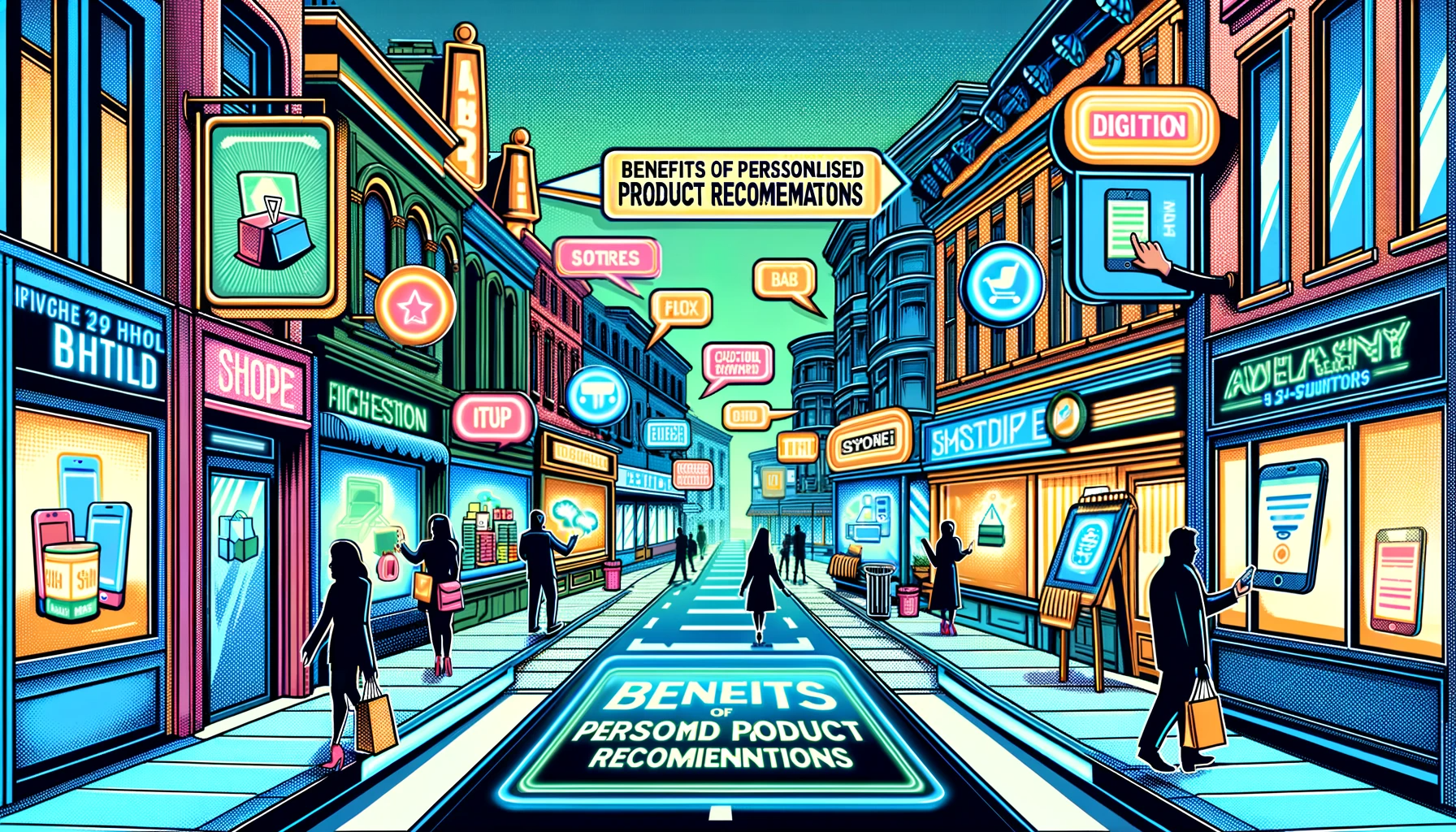Personalization is quickly becoming a core pillar of successful e-commerce strategies. With consumers overwhelmed by options, personalization helps retailers stand out by delivering tailored experiences that turn browsers into buyers. Research shows 61% of shoppers are more likely to return to a retailer that provides a personalized experience.
Implementing personalization takes marketing savvy and technical know-how. Here are seven tactics to bring customization from idea to reality.
Understand Your Customers Through Data
The foundation of personalization is a deep understanding of your customers. Leverage data to gain granular insights into:
- Demographics like age, location, gender
- Psychographics such as interests, values, personality
- Past purchases and browsing behavior
Collect first-party data whenever possible through surveys, app usage, purchases, and more. Compliment this with second-party data like social media links. Use third-party sources sparingly to fill gaps, being transparent and allowing opt-outs.
Analyze data to segment customers into groups. Look for trends, correlations, and actionable insights to inform personalization strategies. Refresh data frequently as preferences evolve.
Craft Personalized Shopping Experiences

Armed with customer insights, build features to tailor the shopping journey itself. Examples include:
Personalized Search Results
Prioritize products that align with the customer’s interests and past purchases in search results. This increases relevancy and reduces search friction.
Customized Category Pages
Strategically highlight certain products on category pages based on the customer’s preferences. For example, showcase travel bags and accessories to frequent fliers.
Individualized Recommendations
Suggest products tailored to the specific customer throughout their journey. Time recommendations based on context like repetitiveness. Increase diversity over time to expose customers to new options.
Tailored Email Campaigns
Send emails with products picked based on past purchases and browsing. Include personalized subject lines like “John, items we think you’ll love.” Personalize content with names and product suggestions.
Harness The Power of Recommendations
Product recommendations are a prime opportunity to boost conversions with personalization. Effective recommendations should be:
Contextual: Match products to where the customer is in their journey. Recommend accessories on product pages, alternatives in carts.
Localized: Account for user demographics and location. Recommend cold weather gear to customers in northern regions.
Timely: Make recommendations when intent is high, like after adding an item to the cart. Hit the moment of maximum impact.
Diverse: Vary recommended items to spark new interests. Don’t just push best-sellers. Mix in emerging products aligned with preferences.
Accurate: Leverage granular data like browsing, ratings and reviews to recommend products they’ll truly like. Avoid generic suggestions.
Refresh algorithms frequently to improve accuracy over time. Give customers controls to rate recommendations or opt out.
Implement AI and Machine Learning

Advanced personalization requires AI and machine learning. Key applications include:
- Predictive analytics to forecast customer needs before they arise
- Automated customer segmentation powered by clustering algorithms
- Natural language processing for chatbots that understand nuanced customer questions
- Computer vision paired with deep learning to build rich style and aesthetic profiles from images
- Recommendation engines fueled by neural networks for hyper-accurate suggestions
Start with rules-based models. As data grows, shift to machine learning for dynamic insights. Partner with data science experts to implement advanced approaches.
Use Behavioral Targeting
Target customers with personalized content and offers tailored to both past behaviors and predicted future actions. Tactics include:
Site-Wide Tracking: Monitor all browsing activity, like product views, cart adds, purchases. Build a complete picture.
Retargeting Ads: Remarket products people viewed or added to carts but didn’t buy. Bring them back to complete the purchase.
Email Triggers: Send customized emails when someone abandons a cart, for example. Remind them of forgotten items.
Predictive Content: Recommend content that aligns with projected user interests based on analytics. Stay one step ahead.
Allow customers to opt out of tracking. Be transparent by explaining targeting in privacy policies.
Choose the Right Personalization Tools
Shopify offers several excellent apps on their marketplace to help merchants personalize their store for customers. These tools allow shop owners to tailor product recommendations, customize homepage banners, segment email lists, and more based on each visitor’s unique interests and needs. By implementing personalization, Shopify users can boost sales, engagement, and loyalty across their site. The customizable recommendations, popups, discounts and other features enabled by these apps create a more engaging, relevant experience for every shopper.
Qstomizer – Custom Products Tool: Known for its extensive template library and AI-assisted features, it’s highly rated for ease of use and customer satisfaction. [Shopify Rating: 4.9/5]
Qstomizer on Shopify
Inkybay – Product Personalizer: Offers a robust visual configurator with advanced product options, catering to various printing methods and detailed customizations. [Shopify Rating: 4.9/5]
Fancy Product Designer: A comprehensive designing tool that is fully responsive, allowing for intricate product designs and personalization. [Shopify Rating: 4.9/5]
Zepto Product Personalizer: Features a user-friendly interface with live product previews, making it easy for customers to see their customizations in real time. [Shopify Rating: 4.8/5]
: Provides unlimited customization options and integrates well with Print-on-Demand services, offering a versatile solution for various business models. [Shopify Rating: 4.8/5]
Measure the Impact

Continuously measure personalization efforts through A/B testing, user analytics and other metrics. Key indicators include:
- Bounce rates to gauge engagement
- Pages per session to measure activity
- Conversion rates as personalization improves
- Revenue per visitor to track monetization
- Customer lifetime value to assess loyalty
Break down metrics by customer segments. Define benchmarks upfront. Monitor results in real-time and tweak approaches to maximize impact.
Success Stories
Personalization leaders have seen stellar results:
- Levi’s boosted mobile conversions 29% using AI-powered product recommendations.
- Cosmetics retailer Sephora saw a 27% increase in revenue from personalized emails.
- Spotify’s Daily Mix playlists tap into user data to generate playlists with recommended artists. This helped increase time spent listening by 35%.
Overcoming Personalization Challenges
While impactful, personalization comes with challenges to address:
Data Silos: Break down data silos between systems to get a unified customer view.
Scaling Complexity: Look for solutions with capabilities to scale from basic to advanced personalization.
Compliance Risks: Keep compliant by allowing opt-outs, anonymizing data, and informing customers.
Lack of Context: Collect more contextual data like location to personalize accurately.
The Future of Personalization

Looking ahead, expect personalization powered by:
- Smarter AI that delivers hyper-tailored recommendations and interactions
- Expanded use of computer vision and augmented reality to take personalization offline
- More voice-based and conversational interfaces bringing personalization to smart speakers
- Connected in-store and digital experiences powered by Internet of Things sensors
The possibilities are endless, limited only by imagination and customer data. Start experimenting with personalization to take your e-commerce business to the next level today. Which tactics will you try first?






Moshe